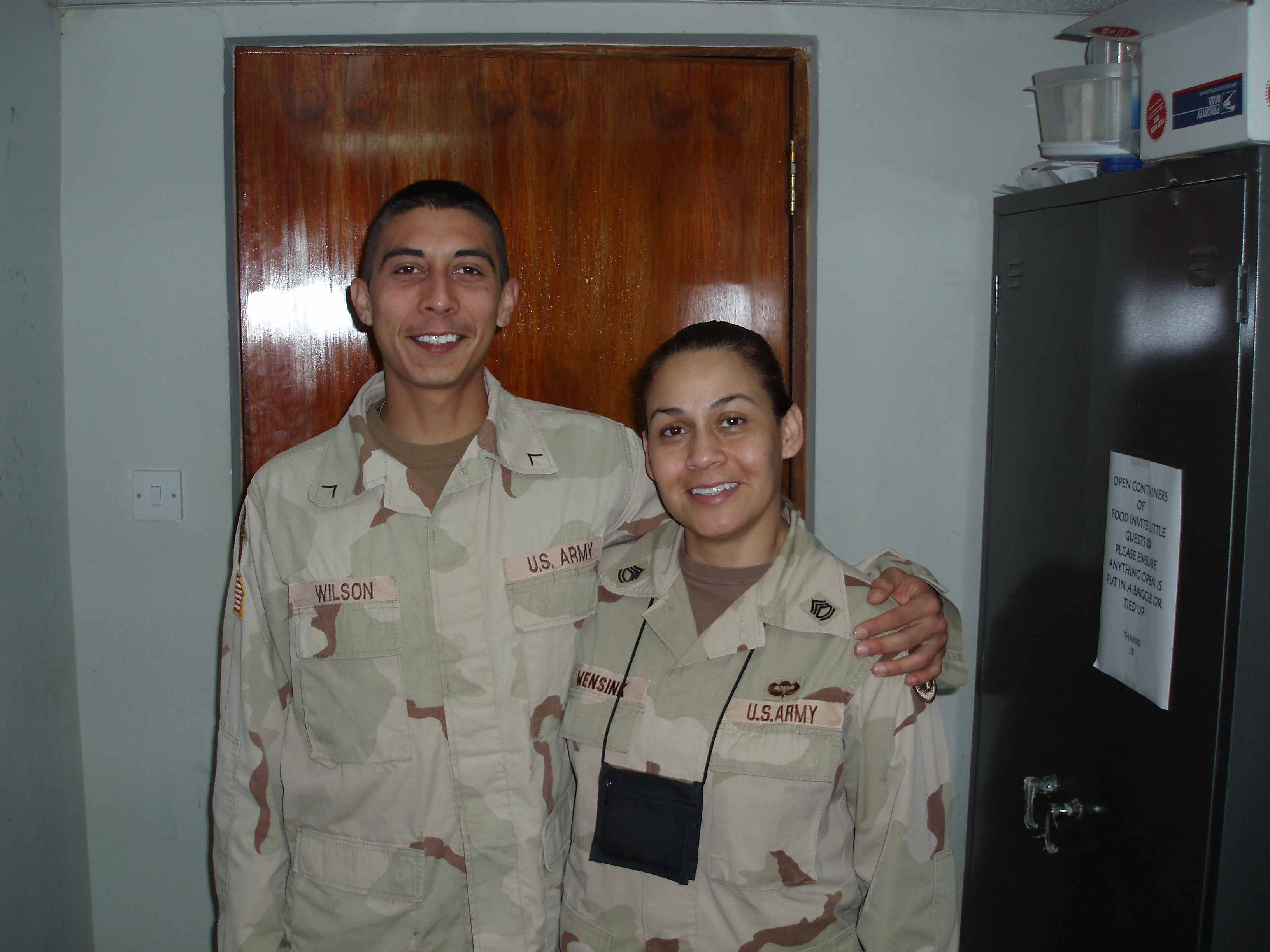Special agent, combat veteran, mother of 3 and Bronze Star Medal recipient recounts her experience in Iraq
When Shakespeare wrote, “Though she be but little, she is fierce!” he could have been talking about Lilia Wensink, a special agent with U.S. Immigration and Customs Enforcement (ICE) Homeland Security Investigations (HSI).
Wensink, a Sergeant First Class in the U.S. Army, volunteered to drive the trail vehicle in the convoy while she was serving in Iraq. Wensink explained that the trail vehicle is the last in the convoy and it maintains security and keeps the other vehicles safe. All the vehicles in a convoy normally have gunners. If one of the vehicles in a convoy hits an improvised explosive device (IED), the trail vehicle provides security until help arrives. On Feb. 22, 2006, Wensink remembers a particularly treacherous convoy trip, for which she received the Action Combat Badge.
Wensink was providing security for the third convoy vehicle, which did not have a gunner. While en route to the Green Zone, the well-fortified district in Baghdad that served as the base of U.S. operations, the convoy team came under attack. “We were passing Iraqi residents’ homes when insurgents began to fire. They were on the rooftops shooting AK 47s. As the trail vehicle driver, I had to push the third Humvee out of the kill zone. I radioed my gunner and told him to ‘fire at will’ at the rooftops for protection. Meanwhile, I had an Iraqi general in my vehicle who was very scared. Afterwards, we saw that our vehicles sustained bullet holes on the windows and turret. God was watching over us,” said Wensink.
After arriving safely in the Green Zone, “the Iraqi general gave me a hug and patted me on the back and said, ‘I want you as my driver.’ I was very honored,” said Wensink.
Wensink also received the Bronze Star Medal for exceptionally meritorious performance while deployed in a combat zone assigned to the Multi-National Security Transition Command – Iraq from Sept.12, 2005 to Sept. 12, 2006. The multinational force’s mission was to train, equip and sustain Iraqi Security Forces such that they would be able to conduct counterterrorism operations on their own. “[Its] mission was central to the United States exit strategy,” said Wensink.
Prior to Wensink’s deployment to the Middle East, she was stationed at MacDill Air Force Base. She told her HSI colleagues that she intended to go to Iraq, drive a tactical truck and come back with a combat medal.
Wensink said her colleagues humored her. But she had the last laugh as her plan rolled into motion the day she requested “to go where the war is, in Iraq” and where her son was also serving in the U.S. Army on a security mission.
“I was at MacDill on Friday, and on Monday I was in Iraq,” said Wensink. Following her plan, Wensink took a crash course in driving a high mobility multipurpose wheeled vehicle (HMMWV). “I didn’t even know how to start it,” she said. “But they needed drivers, so I learned.”
“Besides,” said Wensink, “I was too short to man the 50-caliber guns, so I drove instead. Driving was a very intense, high-adrenaline job. I had to make sure my fellow soldiers, sailors, marines, airmen, Iraqi generals, and whoever was riding with us, made it safely back to the Green Zone.”
The diesel-powered, four-wheel drive tactical HMMWV is not your mom’s glorified SUV. The HMMWV is a formidable piece of machinery. It is used to carry military hardware ranging from machine guns to tube-launched, optically tracked, wire command-guided anti-tank missile launchers. It must perform in a wide variety of terrain, from deserts to jungles, for long periods of time, with minimal maintenance. It has to carry its cargo and occupants in safety while dodging instruments of war — bullets, bombs and mines.
Serving in the Persian Gulf War and Operation Iraqi Freedom, Wensink said she had the pleasure of meeting both General Norman Schwarzkopf and General Martin Dempsey. “Both were great generals,” said Wensink.
Just a portion of the narrative for the Bronze Star Medal that Wensink received, states,
“Despite her limited physical stature, she quickly mastered the use of all weapons to include the heavy M2 50-caliber machine gun. Tough and unflappable, she participated in over 40 combat missions, to include surveys and inspection trips in search of potential facilities for Iraqi Security Forces along with some of the most dangerous routes across Iraq. Identifying and monitoring these sites were critical to building Iraqi security force infrastructure. Sergeant Wensink was recognized for her outstanding convoy skills and was selected to assist in the training of newly arrived Army, Navy, and Air force personnel...Her proven combat experience coupled with her extensive law enforcement background ensured that all replacements were trained in a highly efficient, safe and effective manner. A workhorse who thrived on challenges and adversity, Sergeant Wensink greatly impressed everyone she worked with, subordinates and superiors alike. Her initiative, highly effective leadership, competence and common sense approach to crisis management in a combat zone have been exemplary.”
How did her son react when his mother received the Bronze Star Medal? Who would suspect mother and son, both providing security in the same war theater at the same time, would be engaged in good-natured competition? “At first, he was a little jealous,” said Wensink, with a slight smile. “But, he was also very proud of me.”






